The ultimate family road trip through France – here's how to do it

Carolyn Boyd turned a family holiday in France into a journey of many stops that kept her children very happy
Whenever any child utters that all-familiar question “Are we nearly there?” the last thing they want to hear is, “just 12 hours to go”. How then could we reach the South of France without flying, with two children who haven’t been in a car longer than 10 minutes for the whole of lockdown?
The answer was a six-day road-trip and a series of mini adventures as we drove down the centre of France, picking up the most spectacular route, La Méridienne or the A75 half way down. It meant the answer to “Are we nearly there?” was always “soon”. And by “there” we meant: a dragon, a castle, a farm, a volcano and one almighty bridge. For us chauffeurs, it meant the chance to see how France’s glorious landscape transforms from the lush green of the north, via vast plains, extinct volcanoes on down to the heat of the Med.
With face masks, hand sanitiser and enough snacks to feed the 5,000, we set off on Bastille Day for our Eurotunnel crossing. The terminal and train were eerily quiet but we were soon in France, eating moules marinières served by masked waiters in a restaurant in the heart of Calais. After four months dreaming of our escape, we’d done it. As we walked back to the hotel, the quieter-than-usual Juillet 14 fireworks crackled as if celebrating on our behalf.

A dragon now patrols the Calais seafront: not a new border security tool but the town’s latest attraction. The 32ft-high, 82ft-long mechanical beast was created by the same team as the world-renowned robotic elephant in Nantes. The dragon’s 72-ton heft stomps along the seafront breathing fire, mist and water, carrying 25 (48 pre-Covid) people on its back.
As we approached its “garage” the following morning, it wasn’t just the children in awe, we were too: its glossy limbs and fearsome face were hand-carved from wood in Nantes and transported to Calais by sea for its launch in December. From the top we watched its head move from side to side and spray its misty breath. Its chilling red eyes looked down at crowds before it reared its head and breathed fire into the cyan sky; the children squealed and, OK, so did I.
After bags of chips on the beach from Calais’ renowned Friterie des Nations, it was time to start the big journey south. Skirting along the coast, we headed inland to the Oise department, where golden wheat fields spread for miles before turning into rolling countryside. We made a quick stop at the pretty village of Gerberoy, although its fine-bricked cottages and roses were less appealing to hungry under-10s. “Are we nearly there?” they chimed. “15 minutes” I replied, with an imaginary fist pump.
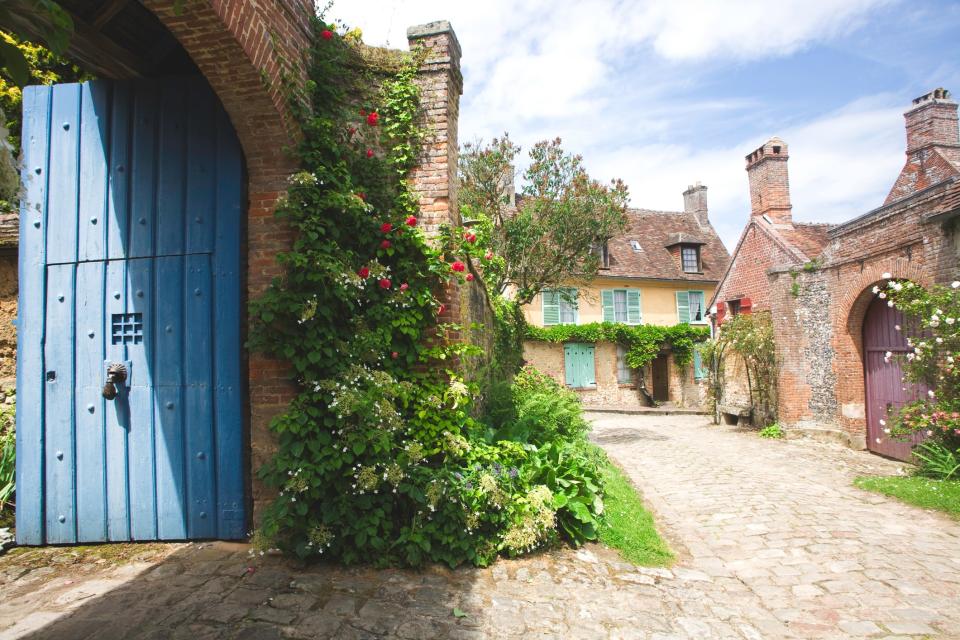
At Saint Germer-de-Fly, we had a warm welcome from Madame Comté at Les Chambres de l’Abbaye – even with a mask the eyes can smile. In her dining room – all antique furniture and modern art – we were served locally reared pork with organic wine then oozing Neufchâtel cheese mopped up with bread. It wasn’t long before we crashed into bed, tired from driving and dragon-riding.
The next day, we pushed on south towards the outskirts of Paris, swapping sleepy farmsteads and vast fields for high-rise flats and dense traffic. But we kept moving and soon we had skirted the capital, driving tantalisingly close to Versailles, without its usual tourist hordes. Soon, the architecture told us the Loire Valley was near – villages built in white tuffeau limestone – and then south on the A10 to stop at Orleans.

On the rue de Bourgogne we paused for a hearty bistro lunch, walking it off along the grand rue de Jeanne d’Arc which frames the cathedral’s impressive façade with its giant medieval flags and elegant architecture. The cathedral, with its soaring arches and exquisite stained glass, was a calming break, despite having to restrain the children’s pyromaniac urges at the votive candles: “Just light one each!”
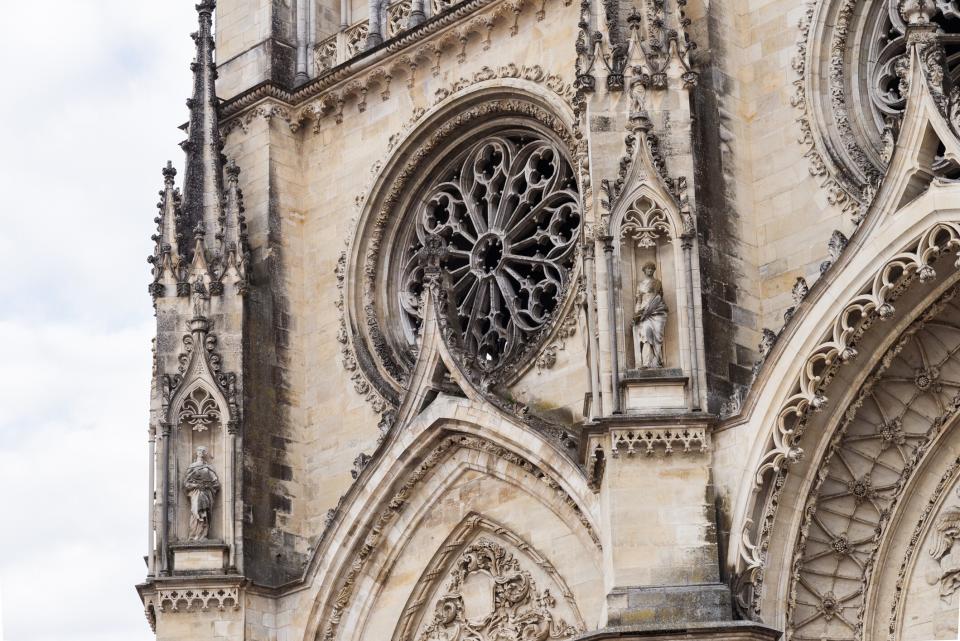
Our next stopover meant a detour west towards Blois. Château de la Rue was a curious place surrounded in sunflower fields: we took in its interiors rammed with antiques and objets d’arts while the kids got ready to leap into the pool. Even under greyish skies, this was the main attraction for them.
For us, it was the proximity to foodie hotspot Montlivault where star chef Christophe Hay was back in action after le confinement at his two-star Michelin restaurant La Maison d’à Côté and its neighbouring Côté Bistro, where we booked a table.
The place was buzzing, with tables well-spaced and staff fully masked. For the menu, we zapped a QR code with our phones and chose free-range chicken à la basquaise with nutty black rice, followed by a superb meringue dessert with refreshing verbena cream and sharp lime sorbet.
The next day, the route south took us into the Bocage bourbonnais, where golden fields were parcelled into rectangles by verdant hedgerows. Then the land began to rise: we took a winding road off the A71 to our next chambres d’hôtes, tucked in the foothills of the Auvergne’s mighty volcanoes. Along the route we caught sight of the sunken peaks ahead, yelling to the kids: “Look, there’s a volcano! See the crater?”
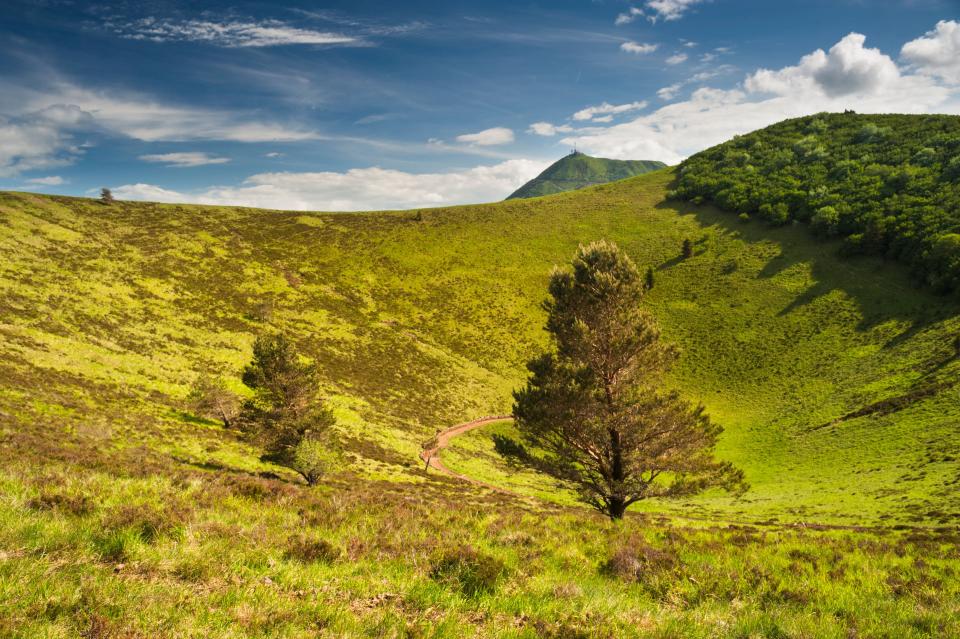
At Les Suites de Campagne – bijou cabins set in the farm’s outbuildings – we picnicked on the lawn. Once the children were asleep, we sat out at the picnic table again, sipping wine and staring up as satellites streaked across the inky black sky studded with diamonds. Silence.
After a superb breakfast of hostess Marie-Claire’s own cake and home-made juice, the kids went down to the field to visit her donkey, racing back to us saying: “Please can we come back?” “Of course,” we said, hearts heavy with regret at not booking two nights here.
On though, because we had a date with a volcano: the highest, the Puy-de-Dôme, isn’t far from the road and so, donning our masks again, we took the rack railway to the 4,800ft peak. The view was stupendous; to the north was the patchwork of fields we drove through the day before, to the east, the orange roofs of Clermont-Ferrand in a dip between hills, beyond it the land rising into the Livradois-Forez regional natural park. To the north-west lay the Chaîne des Puys, a dozen smaller volcanoes. We picnicked on the grass near the crater watching parascenders leap into the void.
We were spoiled by this scenery, but there was more to come. From Clermont-Ferrand, La Méridienne charges through some of France’s most spectacular landscapes. As we entered the Cantal department, steep wooded hills enclosed the motorway before opening out to show us the town of Saint-Flour, perched atop its hill rising out of the Ander valley. Minutes later, we flew past the striking red Garabit Viaduct, designed by a certain Gustave Eiffel.

From here, there was a whisper of the Mediterranean: roofs were now terracotta, the land a little drier. And then we were into the Lozère, France’s least populated department with its legends of wolves (and real-life ones too). Red kites wheeled overhead as we spied the Grands Causses, the Cévennes’ dramatic limestone peaks and cliffs.
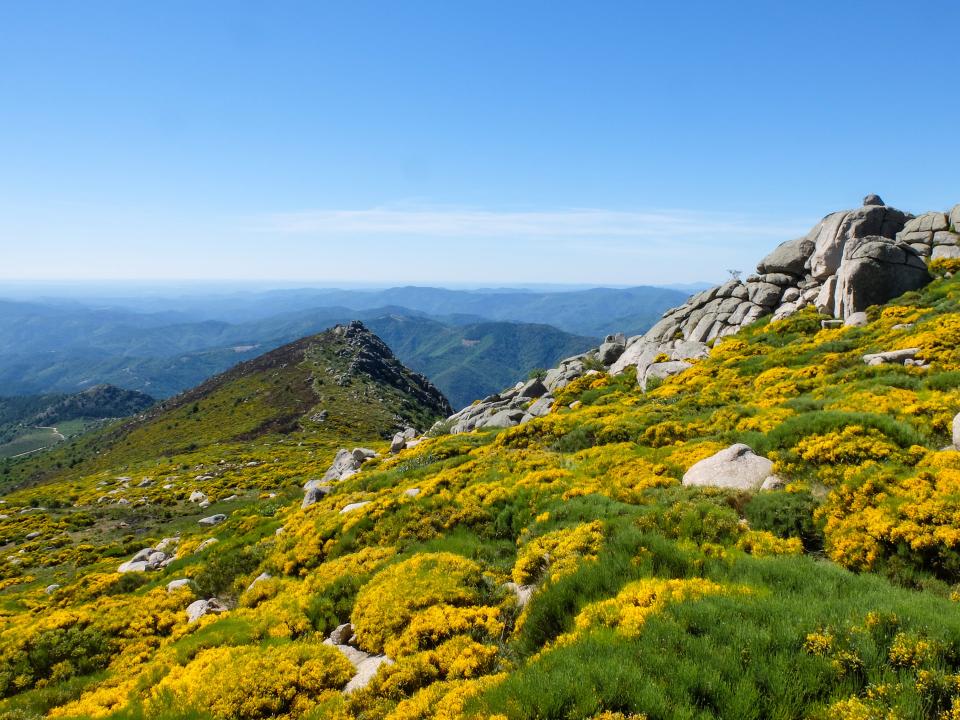
Our final overnight stop was westward, and we swung into the Aveyron region following the D911, a road that follows a crest across the countryside; south-west France was laid out like a gold and green tablecloth on either side of us.
We couldn’t have wished for a warmer welcome at Le Couvent chambres d’hotes in Saint-Just-sur-Viaur: our hostess, ex-pat Louise Flynn, served us rosé wine, we gazed at the view of the village and valley from her terrace as the kids told her all about the journey. We feasted around her homely table that evening and the rosé flowed. After feeding the chickens the next morning, the children resumed their chants of “Can we come back?” which was fast replacing “Are we nearly there?” as the numero uno FAQ.
A thrilling sight awaited us though; at 1,125ft, Norman Foster’s Millau Viaduct is Europe’s highest bridge and spans one-and-a-half miles across the Tarn Valley. Since 2004, it’s been the pièce de résistance of the A75. As we neared it, the tops of its “sails” peaked out over the cutting and then around the corner it appeared fully in all its engineering glory. We ooh-ed and ahh-ed as we went zooming across, gasping as the land fell away beneath.
And there was still more: La Méridienne winds its way south through the Haut-Languedoc regional park of crags and cliffs, down into the Mediterranean landscape – cypress pines, sun-bleached fields and the sound of a million cicadas. We’d made it.

As we drove down the pencil pine-lined driveway of Château Saint-Pierre de Serjac, a family-friendly resort near Pézenas, surrounded in vineyards, the kids were counting the minutes until they could get to the pool. But the youngest had just one more question to ask: With a knowing grin he said: “Are we nearly there?”
Driving in France (in a pandemic)
The drive-on Eurotunnel is one of the safest ways to reach the Continent, so how can you ensure your journey beyond Calais is as socially distanced and Covid-secure as possible?
Service stations
Facilities at France’s aires can vary greatly, from simple picnic spots with a lavatory, to large service stations. To limit your contact with others, pack picnics and look out for those with a sign showing only a tree and picnic table. Some more modern lavatory blocks are self-cleaning, giving extra reassurance. Cars can be refuelled at the pump with gloves, reducing contact.
Villages etapes
For food and a longer break, look for signs to these small villages and towns located less than five minutes or three miles from the motorway. Here you will find a range of welcome facilities and eateries. See village-etape.fr
Tolls
Apart from the Millau Viaduct, the A75 is free of tolls, but for other motorways in France (plus Spain and Portugal), consider getting an Emovis tag. The device fits on the windscreen and allows you to drive through toll stations – you don’t even need to open the window – deducting the fee by direct debit. To set it up, it costs €41 (including a €20 deposit for the tag), but the price is competitive now that so many tolls are card-only, involving credit card fees and exchange rate losses. See emovis-tag.co.uk
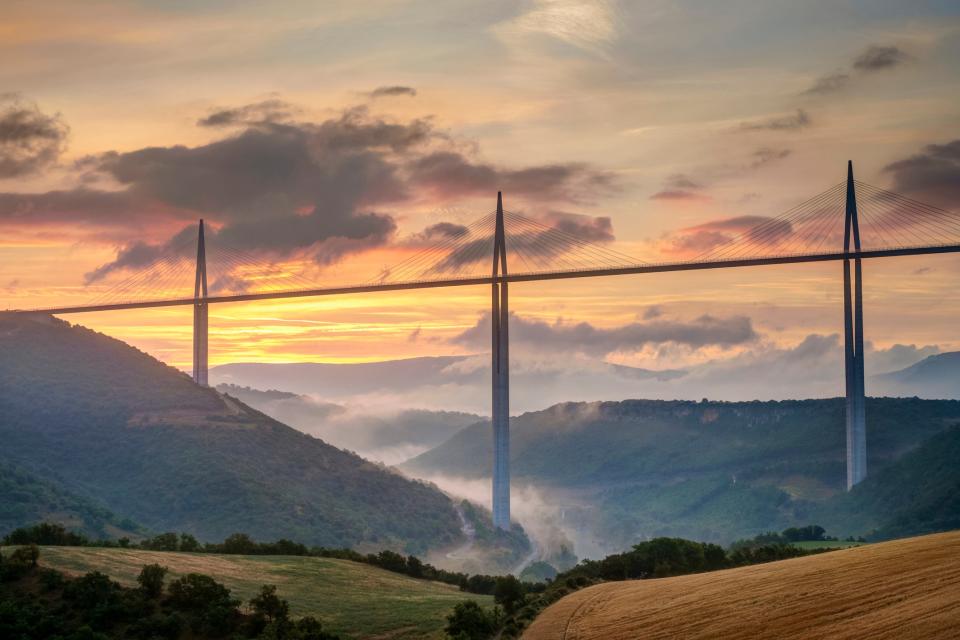
Where to rest – and play
Calais
Stay and park at the Ibis Calais Centre. £86 per night, room only. Le Machine (the dragon), €9.50 (£8.50) per adult, €6.50 for children. Booking essential (compagniedudragon.com).
Picardy
Les Chambres de l’Abbaye, Saint-Germer-de-Fly (sawdays.co.uk) with B&B doubles from €96.
Loire Valley
Château de la Rue, Suèvres (sawdays.co.uk) with B&B doubles from €120. Dinner at Côté Bistro in Montlivault, €34 for three courses (lamaisondacote.fr).
Auvergne
Les Suites de Campagne, Les Eydieux (sawdays.co.uk) with B&B suites for up to four from €145. Le Puy-de-Dôme railway, Panoramique des Dômes costs €14 adults, €7.90 children return per person (panoramiquedesdomes.fr).
Aveyron
Le Couvent, Saint-Just-sur-Viaur (sawdays.co.uk) with B&B doubles from €85.
Pezenas
Château Saint-Pierre de Serjac (serjac.com) with room-only doubles from £120.

 Yahoo News
Yahoo News 
